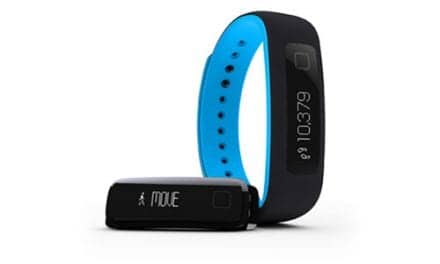Even before the global pandemic, respiratory therapists were aiming to reduce rehospitalizations and keep patients at home. Part of that ongoing effort involves a renewed focus on airway clearance therapy (ACT) via remote monitoring for adherence and prevention.
By Greg Thompson
Even before the global pandemic, respiratory therapists were aiming to reduce re-hospitalizations and keep patients at home. Part of that ongoing effort involves a renewed focus on airway clearance therapy (ACT) via remote monitoring for adherence and prevention.
At Advanced Therapy Solutions (ATS), Peoria, Ill, Mary R. Smith, RRT, MBA serves as director of Clinical Operations with the main goal of providing RTs access to long-term care facilities that do not have respiratory services. When patients return home, however, medications are missed and bronchial hygiene suffers.
“We are focusing on patients with COPD in particular, making sure that when they are admitted, either at home or at long term care facilities, they have their maintenance inhalers, they have their Albuterol,” Smith said. “We offer acapellas [by Smiths Medical] and inspirometers to help pneumonia, improve bronchial hygiene, and bring back CPT [chest physiotherapy treatment] to clear those secretions.”
Smith and her team members are able to offer telehealth and remote assessment, including stethoscopes that are used through the computer to assess respiratory issues. “If we can’t make it to the building, we can still assess via computer, listen to breath sounds, look at their diagnoses, and make sure they have the medications they need,” Smith said. “We can also provide education remotely, making our own little templates and videos on how to use an acapella. We are able to get everyone on board and use this technology to reduce COPD exacerbations.”
Manufacturers continue to drive remote monitoring trends with companies such as Hillrom, Batesville, Ind, expanding their portfolio to address a broad range of respiratory needs, from bronchiectasis and COPD to post-COVID, neuromuscular, and CF. The Vest and Monarch Systems from Hillrom, for example, have Bluetooth pairing capability to the Hillrom Connex Patient App.
“The Connex App does more for patients than record their daily therapy; it’s a convenient one-stop wellness destination to help with keeping track of medications, pulmonary function tests (PFTs), nutrition, exercise and more,” according to Hillrom Respiratory Health (now part of Baxter). “It rewards healthy behaviors and empowers patients to feel their best. The Connex App can also Bluetooth pair to the Smart One home spirometer, allowing patients to track lung health over time along with their vest therapy data. Both HFCWO [High Frequency Chest Wall Oscillation] therapy and PFT data and trending in the Connex App are visible to clinicians in the Connex Health Portal.”
Joelle Hochman, RRT relies on live telehealth sessions to educate and coach pulmonary patients. As founder of Pulmonary Health Coaching, Somerville, Mass., she instructs on breathing, coughing and/or huff exercises, as well as whole body aerobic and strength training exercises.
“While we are working together I am monitoring them as to their shortness of breath, pain level, and rate of perceived exertion, and also having them check their pulse rate and oxygen saturation levels using their pulse oximeter,” Hochman said. “For patients who don’t already own a pulse oximeter, I do ask them to purchase one.”
Expanding the scope of remote monitoring is a priority for Lauren Barkauskas, global product manager, Philips Sleep and Respiratory Care, Pittsburgh Pa. Barkauskas believes the “uniqueness of patient monitoring in the home is not in the audio and video capabilities but in the intelligence that comes with collecting, analyzing, and representing data so that caregivers can act on it with confidence to guide better health outcomes.”
Philips’ Connected Care organization helps to broaden the reach and impact of healthcare with solutions that leverage and unite devices, data, technology, and people across networks of care. “Patients receiving airway clearance therapy with Philips InCourage system are supported individually through ongoing contact by the RespirTech, a Philips Company patient support team,” Barkauskas explains. “This team helps patients get set up for successful therapy and remain connected through the critical first weeks as they incorporate therapy into their lives. Patients in certain groups are then enrolled in the RespirTech outcomes program and actively monitored for two years to provide support that can lead to successful therapy.”
According to Barkauskas, the outcomes program yielded positive results for a variety of patient groups. For example, in COPD-only patients, data collection began in 2013. In the first 12 months, the yearly rate of hospitalization dropped 49% after initiating the use of the InCourage system as part of RespirTech’s VA patient outcomes program.
Philips continues to develop digitally connected solutions for its airway clearance portfolio, consisting of the Philips InCourage system—a HFCWO device; and Philips CoughAssist 70 Series—a mechanical insufflation-exsufflation device. “These solutions will allow healthcare teams to view device and patient therapy data to help keep patients adherent to their therapy and offer support,” Barkauskas added.
Whether the treatment is monitored remotely or in-person, Gary Mefford, RRT, senior manager of Clinical Operations at Hayek Medical Devices contends that a maximally effective approach to airway clearance should provide for support of modification, mobilization, and expectoration.
“Most oscillation-based airway clearance tools assist to varying degrees with modification or thinning secretions and mobilization, but none provide for support of cough and expectoration,” he said. “Only the Hayek [The Hayek RTX with Secretion Clearance Module] can provide secretion clearance with one device that covers the spectrum of secretion modification and mobilization; then in the same treatment cycle with the same interface provide support of cough and expectoration.”
For many patients, the effort required for cough and expectoration is bound to fail due to weakness and lack of endurance. “Many patients with COPD face these challenges,” Mefford explains. “Any tool they are provided [to assist with management of secretions] that will require them to lift and make lip seal with will be inappropriate when they are at their weakest. These patients often have weak and highly obstructed cough flows. Without good modification or thinning of secretions, effective mobilization, and most of all support of their cough in such a way that makes the efforts they exert more effective, the secretion management program is bound to fail.”
With secretion clearance using the continuous negative and true HFCWO with cough support via the Hayek, many patients who need full spectrum optimal therapy can be treated at home or in the hospital. “Optimal therapy will bring shorter hospital stays,” Mefford adds, “and when used at home it can be part of a program to keep COPD patients in the home, decreasing unscheduled visits to the clinic, ER, or hospital—all while lowering system utilization costs as a bonus.”
RT
Greg Thompson is a contributing writer to RT. For more information, contact [email protected].









